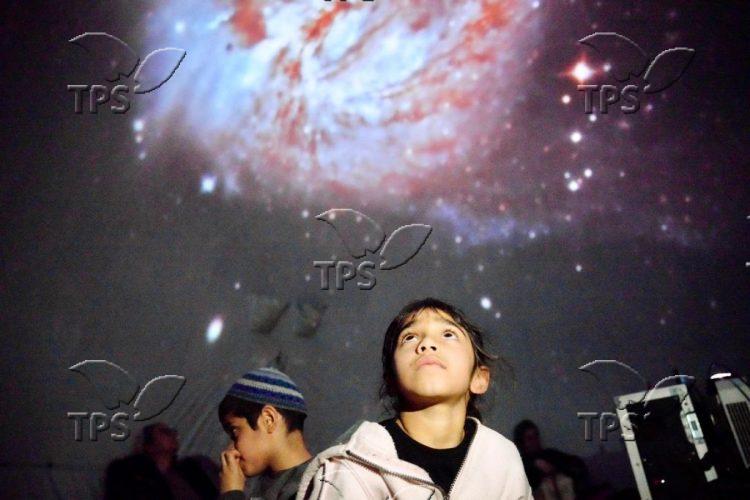Israeli Astronomers Discover Enigmatic Red Supermassive Black Hole Veiled in Cosmic Dust
Jerusalem, 27 February, 2024 (TPS) -- Using data from the James Webb Space Telescope, Israeli astronomers identified an extraordinarily red supermassive black hole shrouded in cosmic dust, challenging current understandings of black hole growth and their relationship with host galaxies.
The Webb Telescope is a space-based observatory orbiting roughly 1.5 million km above Earth, giving researchers an unprecedented view of the universe’s most distant objects and previously unseen phenomena.
Analyzing images taken by the Webb telescope, a team of astronomers led by Dr. Lukas Furtak and Prof. Adi Zitrin from Ben-Gurion University of the Negev revealed what at first seemed to be a lensed, quasar-like object from the early universe. Quasars are incredibly bright and distant objects observed at the centers of galaxies.
“Three very compact yet red-blooming objects prominently stood out and caught our eyes,” said Furtak, the lead author of the discovery papers. “Their ‘red-dot’ appearance immediately led us to suspect that it was a quasar-like object.”
However, this black hole was actively accreting material, referring to the process by which matter falls into and accumulates around a black hole due to its intense gravitational pull. This matter can come from various sources, such as gas clouds, stars, or even other black holes.
Said Zitrin, “We used a numerical lensing model that we had constructed for the galaxy cluster to determine that the three red dots had to be multiple images of the same background source, seen when the Universe was only some 700 million years old.”
The Ben-Gurion researchers were working in the framework of the Webb Telescope’s UNCOVER program, which is surveying the universe. With input from other UNCOVER researchers in the US and Australia, “We managed to not only confirm that the red compact object was a supermassive black hole and measure its exact redshift, but also obtain a solid estimate for its mass from the width of its emission lines,” Furtak said.
“Gas is orbiting in the gravitational field of the black hole and achieves very high velocities that are not seen in other parts of galaxies. Because of the Doppler shift, light emitted by the accreting material is red-shifted on one side and blue-shifted on the other side, according to its velocity. This causes emission lines in the spectrum to become broader,” he explained.
According to the researchers, the colors suggest that the black hole lies behind a thick veil of dust obscuring much of its light. The team managed to measure the black hole mass and discovered that it was significantly more massive, compared to its host galaxy, than what has been seen in more local examples.
The findings, recently published in the peer-reviewed Nature journal, raise new questions.
Most notably, the black hole’s mass surpasses that of its host galaxy by a significant amount.
“All the light of that galaxy must fit within a tiny region the size of a present-day star cluster. The gravitational lensing magnification of the source gave us exquisite limits on the size. Even packing all the possible stars into such a small region, the black hole ends up being at least one percent of the total mass of the system,” said Princeton University Prof. Jenny Greene, one of the study’s co-authors.
“In fact, several other supermassive black holes in the early universe have now been found to show a similar behavior, which leads to some intriguing views of black hole and host galaxy growth, and the interplay between them, which is not well understood,” she added.
Said Zitrin, “In a way, it’s the astrophysical equivalent of the chicken and egg problem. We do not currently know which came first – the galaxy or black hole, how massive the first black holes were, and how they grew.”







